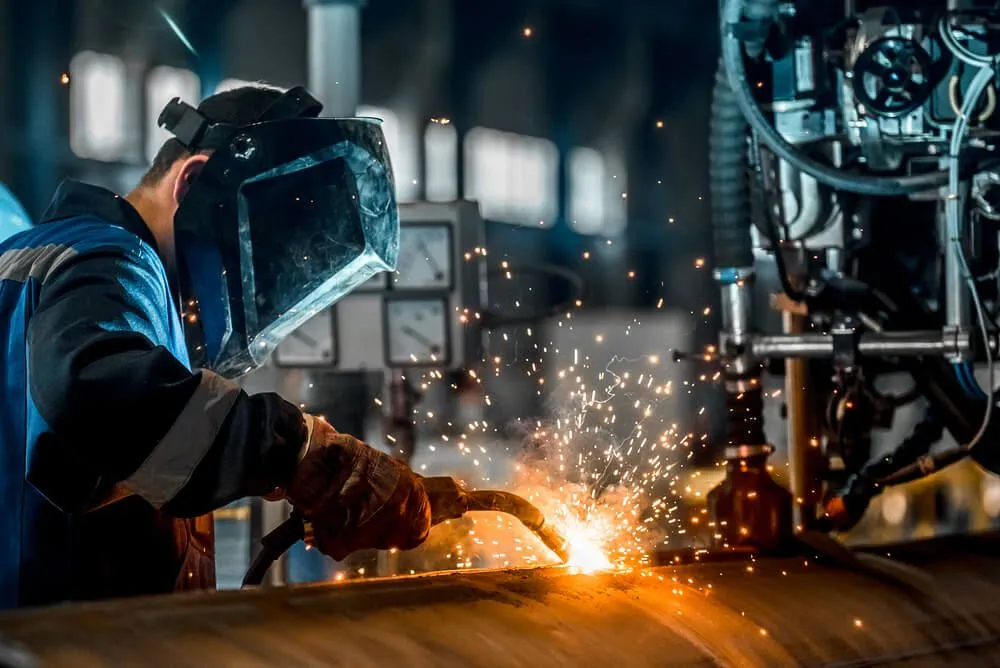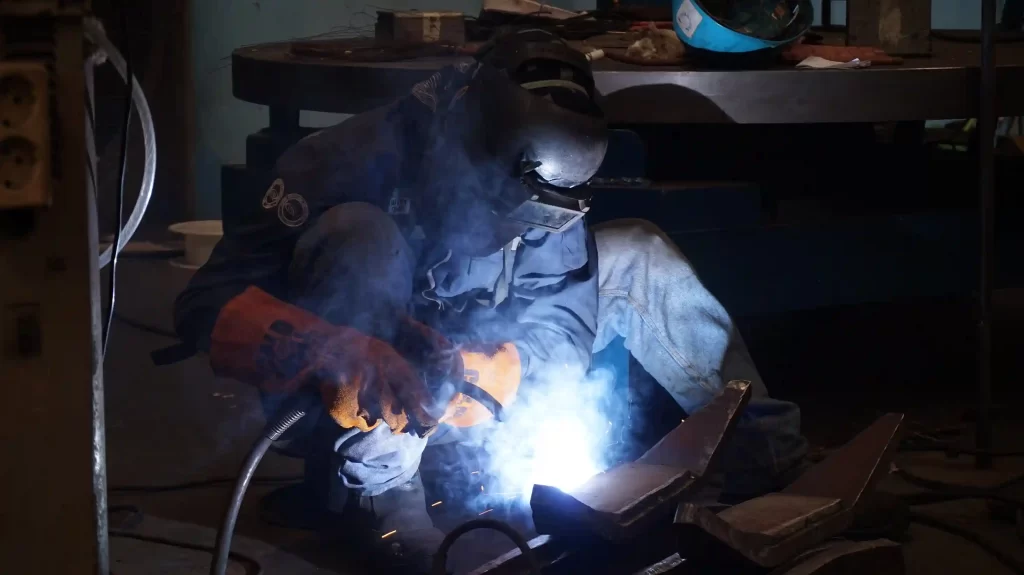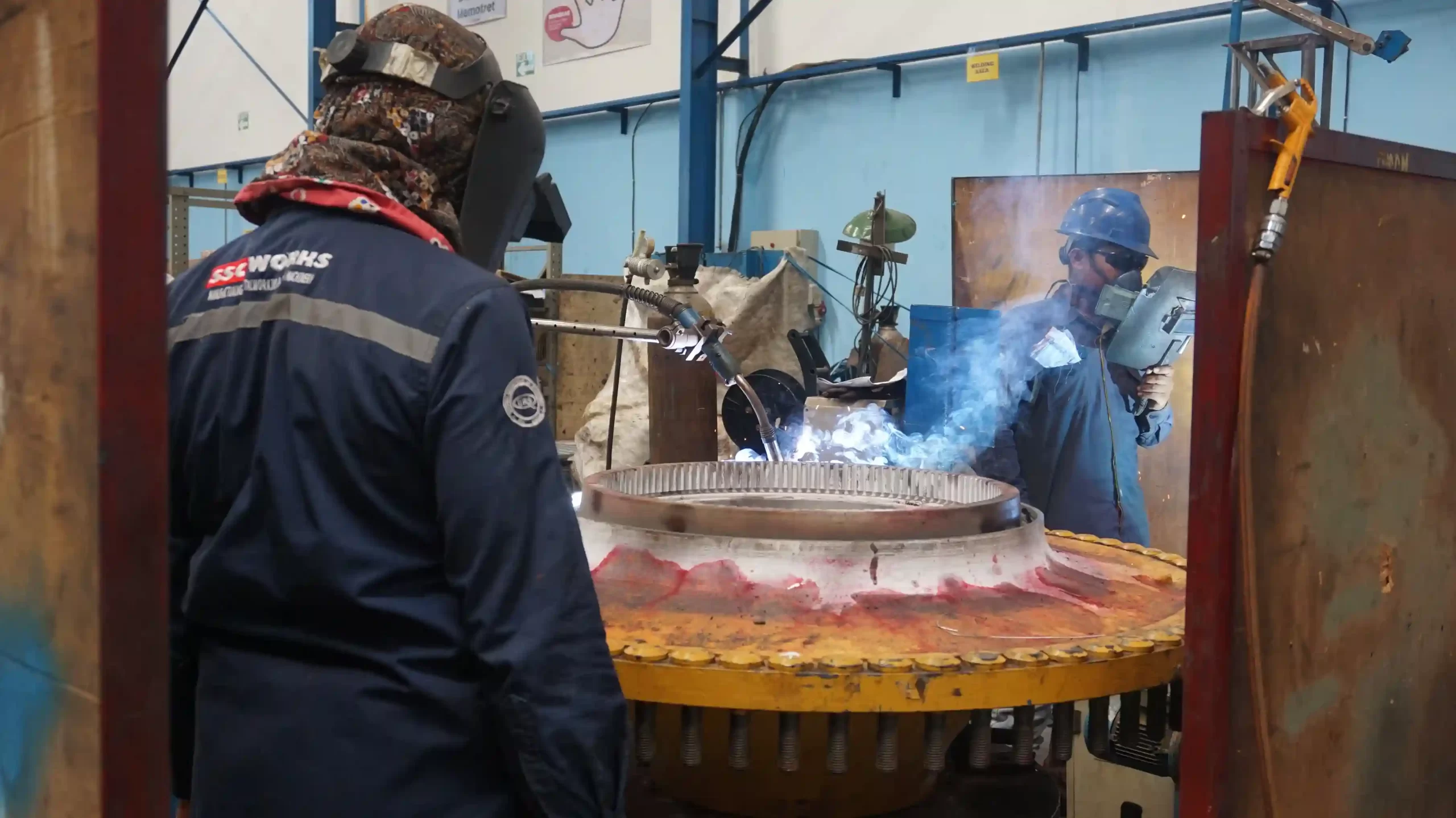Aluminum Welding: Techniques, Challenges, and Solutions in Heavy Equipment Repair
Aluminum welding is the process of joining aluminum materials by heating them until they melt and fuse together. Known for being lightweight and resistant to corrosion, aluminum is widely used in various industrial applications, including the manufacturing and repair of heavy equipment. While aluminum welding may seem similar to other metals, its unique properties present particular challenges that require specialized knowledge and techniques.
At SSC Works, we have extensive experience in aluminum welding for heavy equipment, from hydraulic cylinder repairs, custom fabrication, to the production and repair of critical components. This article will provide a detailed overview of aluminum welding techniques, the challenges involved, and the solutions we offer.

Why Is Aluminum Used in Heavy Equipment?
Aluminum is chosen for heavy equipment applications for several reasons:
Lightweight
Aluminum has a lower density than steel, making it ideal for components that require weight reduction without compromising strength.Corrosion Resistance
Aluminum forms a natural oxide layer that protects it from corrosion, which is especially beneficial in harsh environments like mining sites or areas exposed to high humidity.Good Strength
Although lightweight, aluminum has good strength, making it suitable for various heavy equipment components, especially when properly processed.
Aluminum Welding Techniques
Aluminum welding requires specific techniques due to its different characteristics compared to steel or iron. Some common welding methods for aluminum include:
TIG Welding (Tungsten Inert Gas)
TIG welding is often used for aluminum as it produces clean and precise welds. This method uses a non-consumable tungsten electrode, while inert gas such as argon shields the weld area from oxidation.MIG Welding (Metal Inert Gas)
MIG welding is faster and commonly used for large-scale fabrication projects. In aluminum welding, inert gas prevents oxidation, and a filler wire made of aluminum is melted to join the materials.Oxy-Acetylene Welding
Though rarely used for aluminum, this method can be applied for some specific welding tasks, particularly for smaller components.

Challenges in Aluminum Welding
Aluminum welding presents several challenges that make it more difficult than welding steel or other metals:
Low Melting Point
Aluminum has a lower melting point than steel, making it more prone to overheating or burning if not properly controlled.Thermal Conductivity
Aluminum absorbs and distributes heat quickly and evenly, which can cause distortion or warping during welding, especially on thinner sheets.Oxide Layer
Aluminum naturally forms an oxide layer, which is difficult to weld as it has a much higher melting point than aluminum itself. Therefore, the surface must be thoroughly cleaned before welding.Porosity
Aluminum has a tendency to form pores in the weld, which can weaken the joint if not addressed using proper welding techniques.
Aluminum Welding Solutions at SSC Works
At SSC Works, we understand the challenges associated with aluminum welding and have the expertise to overcome them. Using modern equipment and cutting-edge technology, we deliver precise and durable welding solutions. Some steps we take to address these challenges include:
Accurate Temperature Control
With advanced welding tools, we can precisely control the temperature to prevent overheating or damage to the components.Thorough Surface Cleaning
We ensure that aluminum surfaces are cleaned of oxides and contaminants before welding, resulting in strong and pore-free welds.Appropriate Welding Technique Selection
We tailor the welding technique based on the component type and material thickness to avoid distortion or warping.Skilled Operators and Mechanics
At SSC Works, our operators are highly skilled in aluminum welding. They are specially trained to handle various types of heavy equipment and aluminum components, ensuring that every weld meets the highest standards.
The Importance of Aluminum Welding for Heavy Equipment
Aluminum welding plays a crucial role in keeping heavy equipment operational. In the mining industry, for example, aluminum components are often used in parts that require strength while minimizing weight. Additionally, due to its corrosion-resistant properties, aluminum is commonly used in equipment that operates in harsh environments. Through proper welding techniques, SSC Works can extend the life of aluminum components and ensure that your heavy equipment continues to operate at peak performance.
Conclusion
Aluminum welding is no easy task, but with the right techniques and extensive experience, SSC Works is prepared to meet the challenge. We offer aluminum welding solutions for various types of heavy equipment and components, including custom fabrication and major repairs. If you require precise and high-quality aluminum welding services, SSC Works is ready to assist you with the best solutions.

